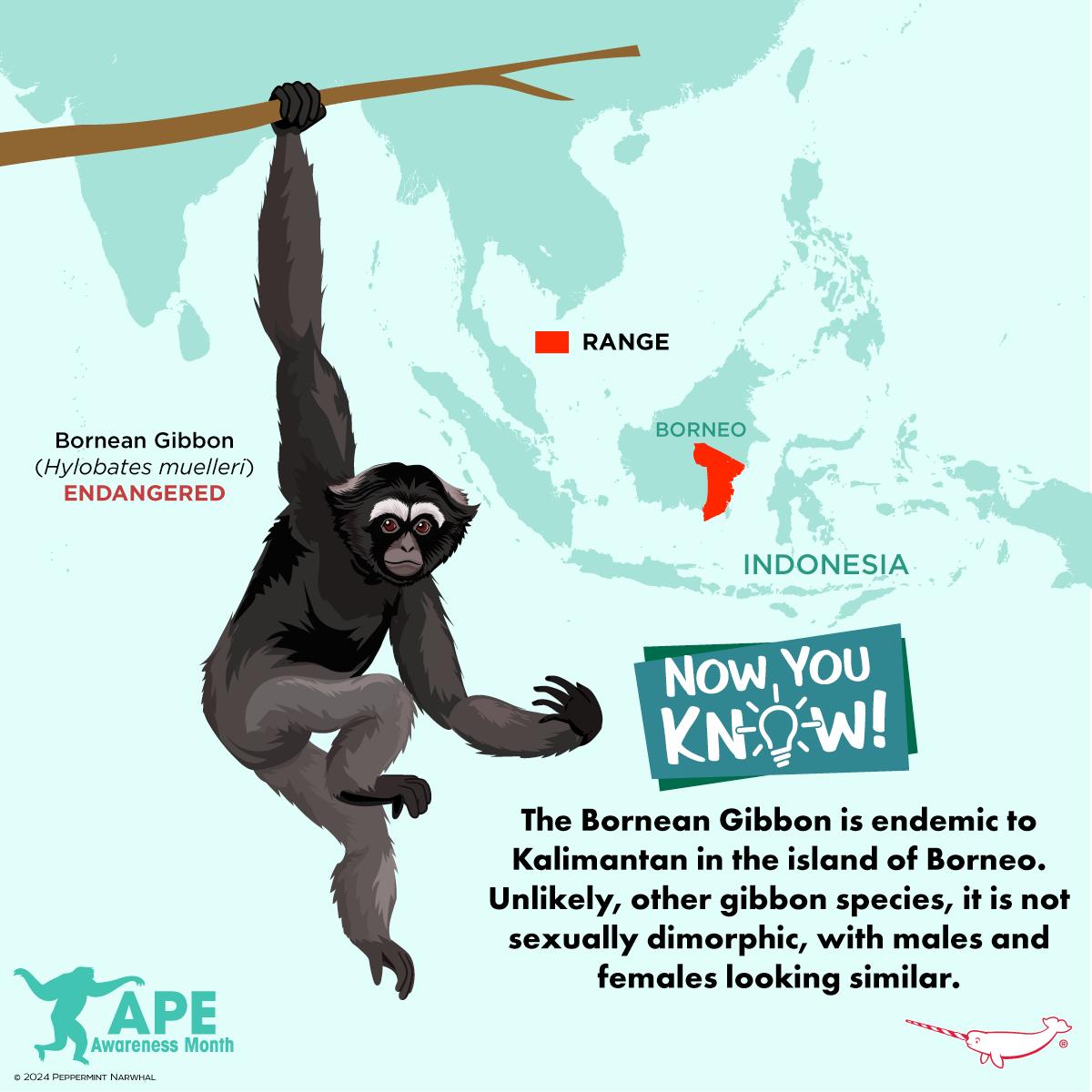– Understanding the Bornean Gibbon (Hylobates muelleri) biology and habitat
– Challenges faced by the species in the wild and conservation efforts
– The role of education and community involvement in gibbon conservation
– Exploring the cultural significance of gibbons in Kalimantan
– The importance of Ape Awareness Month and how to get involved
The Bornean Gibbon (Hylobates muelleri) is an intriguing primate endemic to Kalimantan, the Indonesian portion of the island of Borneo. Unlike other gibbon species, this one does not display sexual dimorphism, meaning males and females possess similar physical features, making them visually indistinguishable from the untrained eye. This aspect of their biology is just one of many fascinating features of the Bornean Gibbon that contribute to our understanding of primate evolution and biodiversity.
Residing in the dense forests of Borneo, the Bornean Gibbon thrives in a complex ecosystem that provides it with the fruits and insects necessary for sustenance. The species is arboreal, spending much of its life in the tree canopy, which makes it highly dependent on forested environments. Deforestation for palm oil production, logging, and agricultural expansion poses a significant threat to their habitat, leading to population declines. Conservation efforts are critical to preserving their environment and ensuring the survival of this species. Initiatives include habitat restoration projects, anti-poaching patrols, and environmental education programs for local communities.
The involvement of local communities in conservation work is paramount. Educational programs that inform locals about the Bornean Gibbon’s ecological role and economic benefits of biodiversity can foster a conservation-minded community. Participatory monitoring and community-based ecotourism projects show how local people can actively contribute to conservation while benefiting from it.
Gibbons holds a special place in the cultures of Kalimantan. They are often featured in local folklore and regarded as symbols of protection for the forest and its inhabitants. This cultural significance can be leveraged in conservation messaging to strengthen local engagement in gibbon preservation efforts.
April is celebrated as Ape Awareness Month, providing a timely reminder of the plight of gibbons and other apes. It’s an opportunity to raise awareness about these species’ challenges, from habitat loss to illegal wildlife trade. Engaging in Ape Awareness activities, supporting conservation organizations, and spreading the word about the importance of primate conservation are ways the public can contribute to the cause.
The Bornean Gibbon is more than just an interesting species of primate; it’s a key component of its environment and a symbol of the rich biodiversity of Borneo. Its challenges highlight the broader issues of environmental conservation and the importance of maintaining our planet’s biodiversity. Through continued research, concerted conservation efforts, and increased public awareness, there is hope for the future of the Bornean Gibbon and the ecosystems it calls home. Celebrating Ape Awareness Month provides a platform to inspire action and support for these invaluable creatures and their preservation.
*****
Source Description
Now You Know! – The Bornean Gibbon (Hylobates muelleri) is endemic to Kalimantan in the island of Borneo. Unlikely, other gibbon species, it is not sexually dimorphic, with males and females looking similar.
Happy Ape Awareness Month!
Stay connected with us throughout April as we celebrate Ape Awareness Month.
Ape Merch:
https://www.peppermintnarwhal.com/s/search?q=gorilla,%20orangutan
…and for more great animal merch Shop
www.peppermintnarwhal.com


